#13
In 2007 Bluefin tuna was critically overfished. Regulations were passed in order to protect the future of the species. ICCAT researchers say the amount of fish caught in the years directly after dropped by 80%. Since then, the population has recovered enough that the quotas have been steadily rising for the last few years. Spain, France, Italy, Tunisia, Libya, Turkey, and Japan are catching the largest number of Bluefin tuna. The total registered catch in 2017 was just 40% of the catch before regulations in 2007.
#14
Bluefin tuna born in June measures between 30-40 centimeters (1-1.3 ft). and weights around 1 kilogram (2 lbs.). After a year the fish grows to 4 kilograms (8 lbs.) and 60 centimeters (2 ft.). At age 10, the fish measures 200 centimetres (6.5 ft.) and 170 kilograms (375 lbs.). At 20 we’re talking 400 kg (880 lbs.) and 270 cm (8.8 ft.). A Bluefin tuna can reach 40 years of age and grow to 330 cm (10.8 ft.) and a whopping 725kg (1600 lbs.).


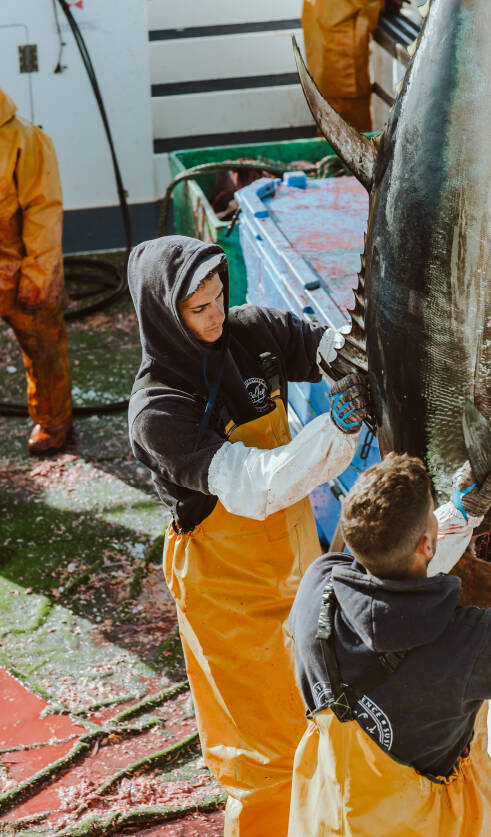
#11
Many consumers are unaware the Bluefin tuna is no longer endangered. If you plan on serving Bluefin in your restaurant, make sure it comes with the necessary documentation. That way you can ensure your fish is caught sustainably. That way you can ensure your fish is caught sustainably.
#10
Each legally caught tuna is tested for disease and given its own passport. This document records the color, the day it was caught, and the fat percentage of the fish.
#9
Jakob Doorn of fresh fish trader Jan van As knows tuna. He was trained to recognize quality by some of the finest chefs in Japan. Doorn: “You can tell quality by a deep red color, a lack of odor, the firmness of the flesh and a beautiful sheen. If you see any sign of purple-yellow mother of pearl it means the fish is old or has suffered stress. A stressed fish tastes worse and doesn’t keep as long.”
#8
Not everything is sunshine and roses in the tuna industry. Sometimes beet juice or even animal blood is used to color the meat of the fish to camouflage decay. Fishmongers are often offered cheap batches with no documentation regarding sourcing.
#12
Chef Mark Vaessen: “Sourcing products is extremely important, and that goes double for the king on our menu: the tuna. I know a lot about tuna, but to witness the entire process from catch to plate is a unique experience.”

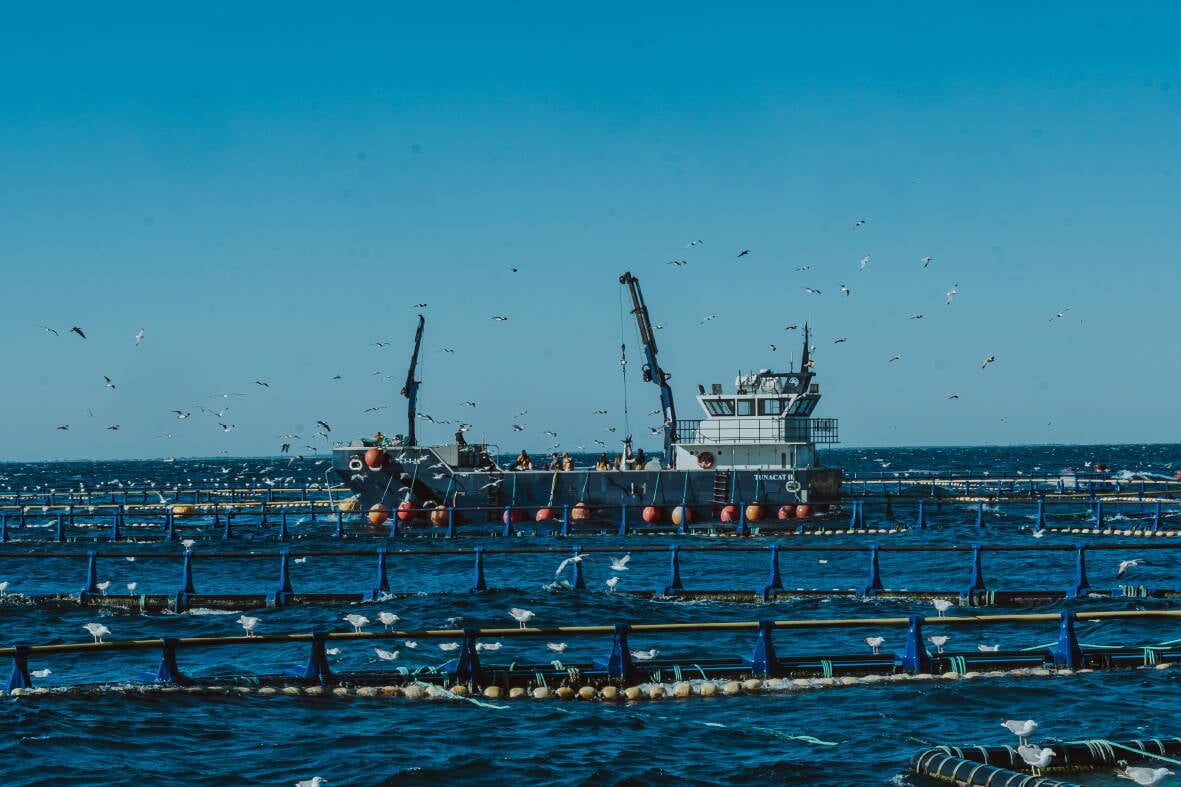
#6
The tuna is placed in ice water. The boat goes back to port where the fish is offloaded and transported to the factory. There they are weighed and prepared for shipping. The fresh tuna is boxed with ice and transported by plane.
#7
Each tuna sold by Balfego has its own passport, so the chef eventually preparing the fish can see when it was caught and shipped.
#5
The tuna is hoisted aboard and dressed. Samples are taken from the tail to measure fat and stress levels. An ICCAT official on board registers each fish.
#4
The dead tuna sink to the bottom, where they are gutted. The extreme pressure at 35 meters (115 ft) makes the fish bleed out quickly. The stomach is then filled with oxygen, causing the fish to float to the surface.
#3
They kill the fish using a harpoon to minimize stress.
#1
The fish are kept and bred in large nets in the Mediterranean Sea.
#2
As the orders come in, divers enter the waters in the early morning to catch the exact amount necessary.

About Balfego
Balfego is a Spanish family business specialized in Bluefin tuna. Regulators give the company a yearly quota of fish they aren’t allowed to exceed. Every fish they catch is inspected by ICCAT, the International Commission for the Conservation of Atlantic Tunas, which is founded by the European Union.
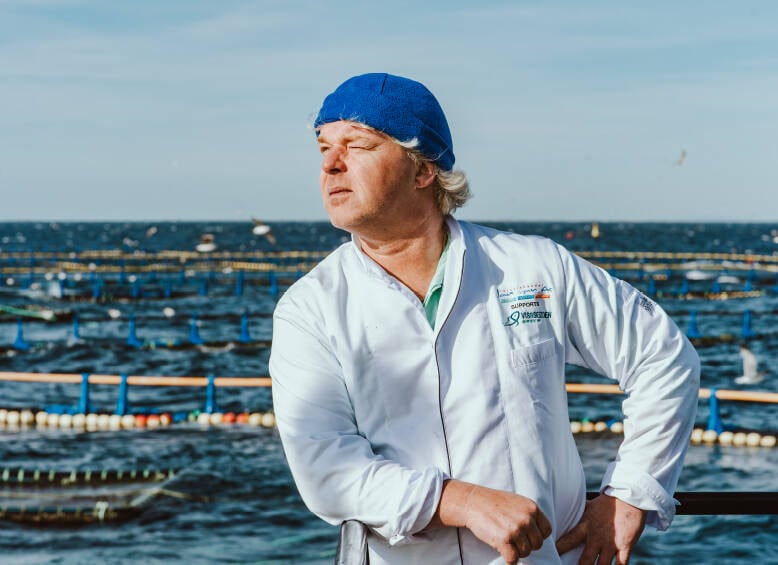
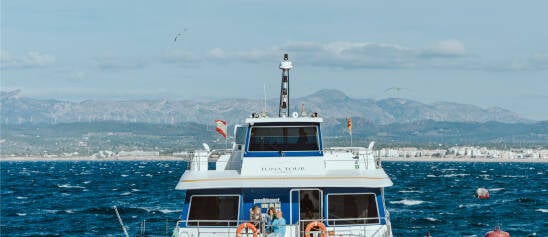
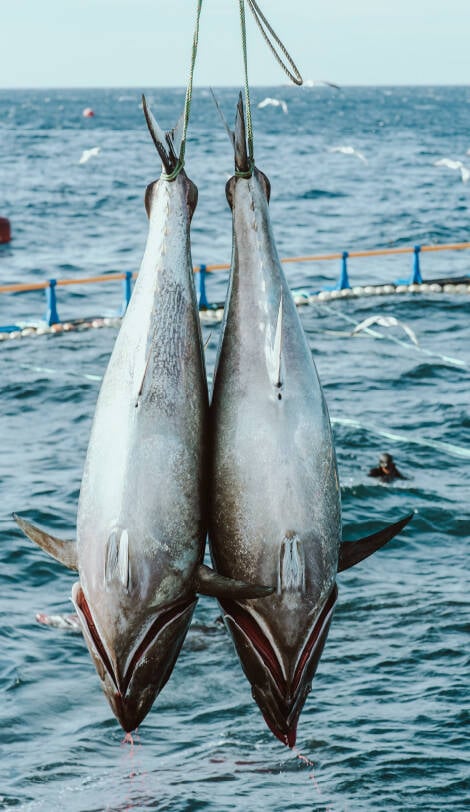
Hans Steenbergen Sander van der Meij Nina Slagmolen
The Bluefin tuna is a controversial fish. Not many people are aware the species is doing relatively well. But can you put this king of fish on your menu without regrets? Food Inspiration teamed up with Dutch fish expert Jakob Doorn (fresh fish trader Jan van As) and chef Mark Vaessen (restaurant Sushisamba in Amsterdam) on a journey to Spain to visit the tuna farmers at Balfego. We came back with answers to some burning questions.
BLUEFIN TUNA
On a journey to Spain
Reportage
6 min
#13
In 2007 Bluefin tuna was critically overfished. Regulations were passed in order to protect the future of the species. ICCAT researchers say the amount of fish caught in the years directly after dropped by 80%. Since then, the population has recovered enough that the quotas have been steadily rising for the last few years. Spain, France, Italy, Tunisia, Libya, Turkey, and Japan are catching the largest number of Bluefin tuna. The total registered catch in 2017 was just 40% of the catch before regulations in 2007.
#14
Bluefin tuna born in June measures between 30-40 centimeters (1-1.3 ft). and weights around 1 kilogram (2 lbs.). After a year the fish grows to 4 kilograms (8 lbs.) and 60 centimeters (2 ft.). At age 10, the fish measures 200 centimetres (6.5 ft.) and 170 kilograms (375 lbs.). At 20 we’re talking 400 kg (880 lbs.) and 270 cm (8.8 ft.). A Bluefin tuna can reach 40 years of age and grow to 330 cm (10.8 ft.) and a whopping 725kg (1600 lbs.).

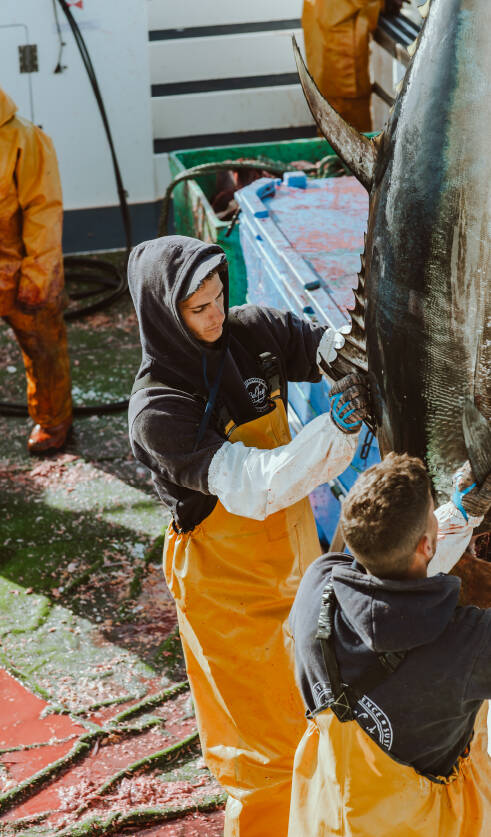
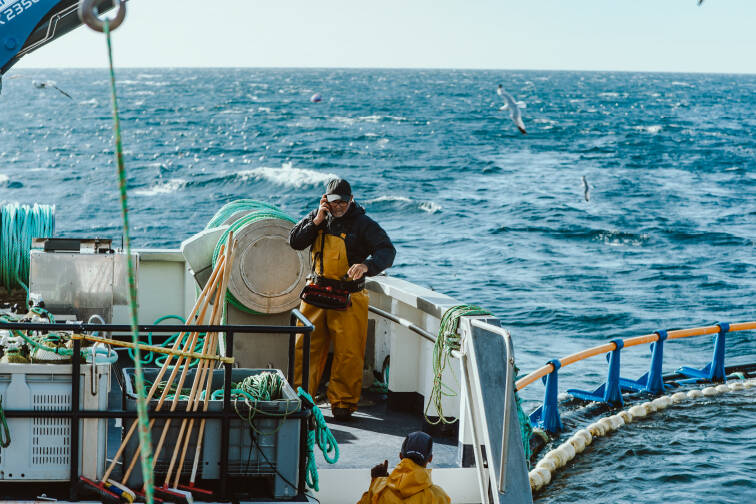
#11
Many consumers are unaware the Bluefin tuna is no longer endangered. If you plan on serving Bluefin in your restaurant, make sure it comes with the necessary documentation. That way you can ensure your fish is caught sustainably. That way you can ensure your fish is caught sustainably.
#12
Chef Mark Vaessen: “Sourcing products is extremely important, and that goes double for the king on our menu: the tuna. I know a lot about tuna, but to witness the entire process from catch to plate is a unique experience.”

#10
Each legally caught tuna is tested for disease and given its own passport. This document records the color, the day it was caught, and the fat percentage of the fish.
#9
Jakob Doorn of fresh fish trader Jan van As knows tuna. He was trained to recognize quality by some of the finest chefs in Japan. Doorn: “You can tell quality by a deep red color, a lack of odor, the firmness of the flesh and a beautiful sheen. If you see any sign of purple-yellow mother of pearl it means the fish is old or has suffered stress. A stressed fish tastes worse and doesn’t keep as long.”
#8
Not everything is sunshine and roses in the tuna industry. Sometimes beet juice or even animal blood is used to color the meat of the fish to camouflage decay. Fishmongers are often offered cheap batches with no documentation regarding sourcing.

#7
Each tuna sold by Balfego has its own passport, so the chef eventually preparing the fish can see when it was caught and shipped.
#6
The tuna is placed in ice water. The boat goes back to port where the fish is offloaded and transported to the factory. There they are weighed and prepared for shipping. The fresh tuna is boxed with ice and transported by plane.
#6
Once the head of the fish has been removed, a steel wire is inserted into the spine in order to relax the meat.
#5
The tuna is hoisted aboard and dressed. Samples are taken from the tail to measure fat and stress levels. An ICCAT official on board registers each fish.
#4
The dead tuna sink to the bottom, where they are gutted. The extreme pressure at 35 meters (115 ft) makes the fish bleed out quickly. The stomach is then filled with oxygen, causing the fish to float to the surface.
#3
They kill the fish using a harpoon to minimize stress.
#1
The fish are kept and bred in large nets in the Mediterranean Sea.

#2
As the orders come in, divers enter the waters in the early morning to catch the exact amount necessary.
Balfego is a Spanish family business specialized in Bluefin tuna. Regulators give the company a yearly quota of fish they aren’t allowed to exceed. Every fish they catch is inspected by ICCAT, the International Commission for the Conservation of Atlantic Tunas, which is founded by the European Union.
About Balfego
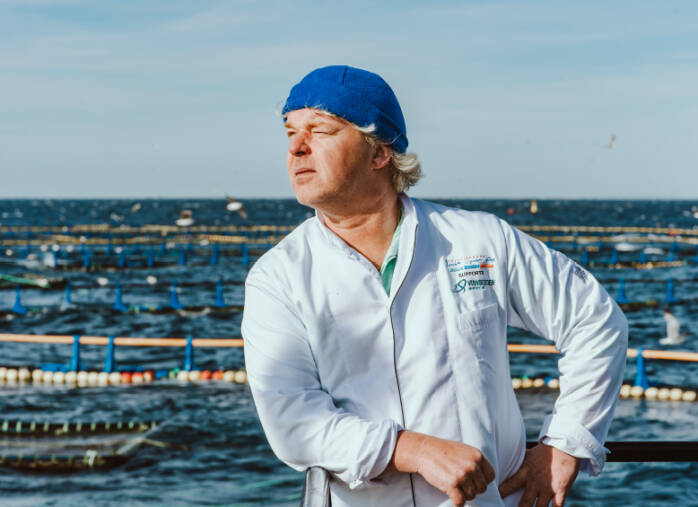
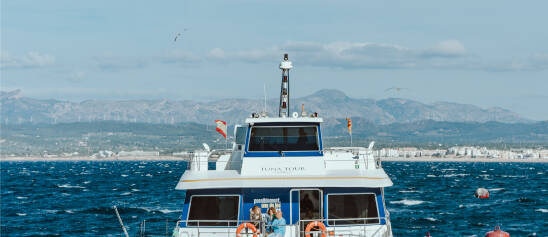

Hans Steenbergen Sander van der Meij Nina Slagmolen
The Bluefin tuna is a controversial fish. Not many people are aware the species is doing relatively well. But can you put this king of fish on your menu without regrets? Food Inspiration teamed up with Dutch fish expert Jakob Doorn (fresh fish trader Jan van As) and chef Mark Vaessen (restaurant Sushisamba in Amsterdam) on a journey to Spain to visit the tuna farmers at Balfego. We came back with answers to some burning questions.
BLUEFIN TUNA
On a journey to Spain
6 min








